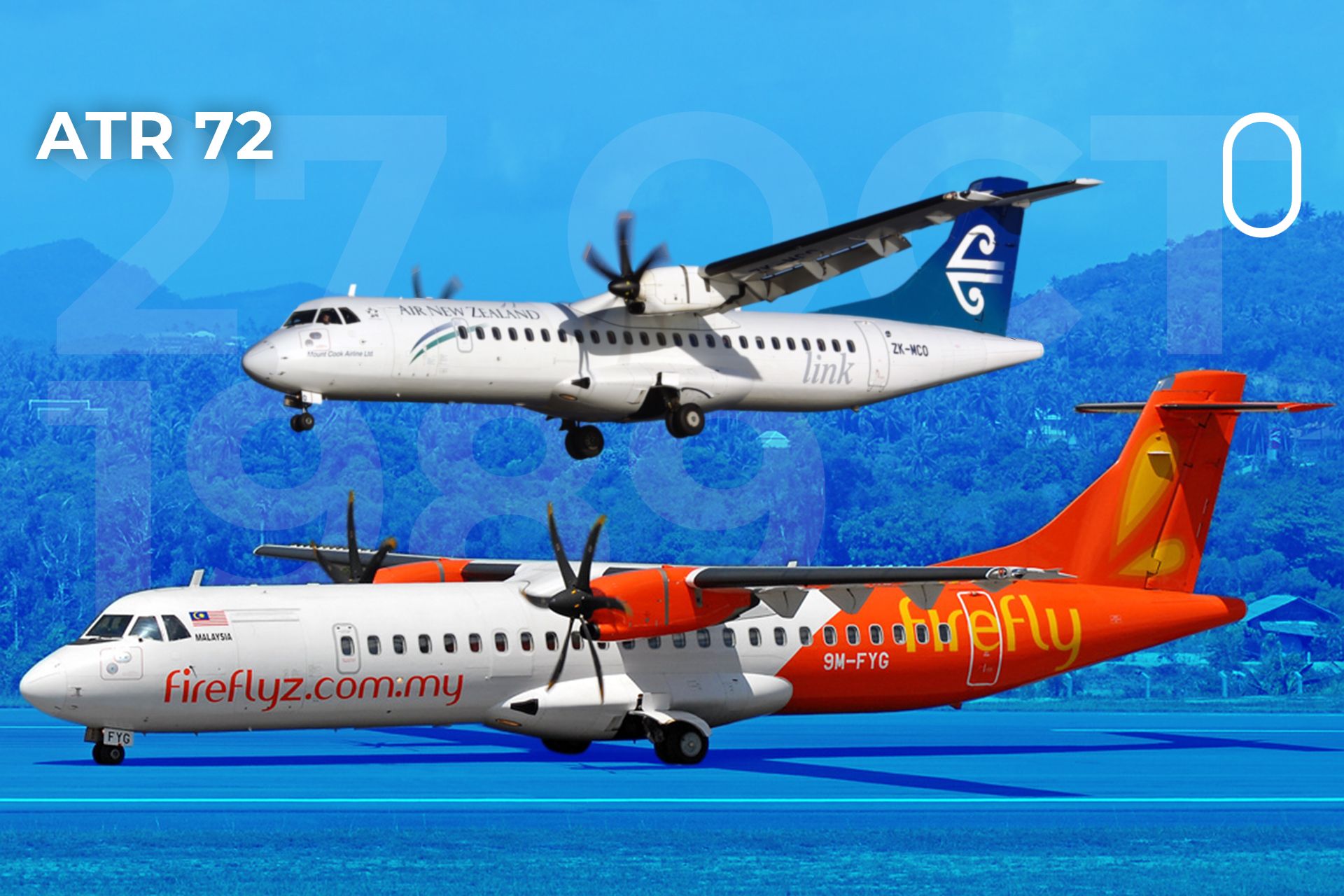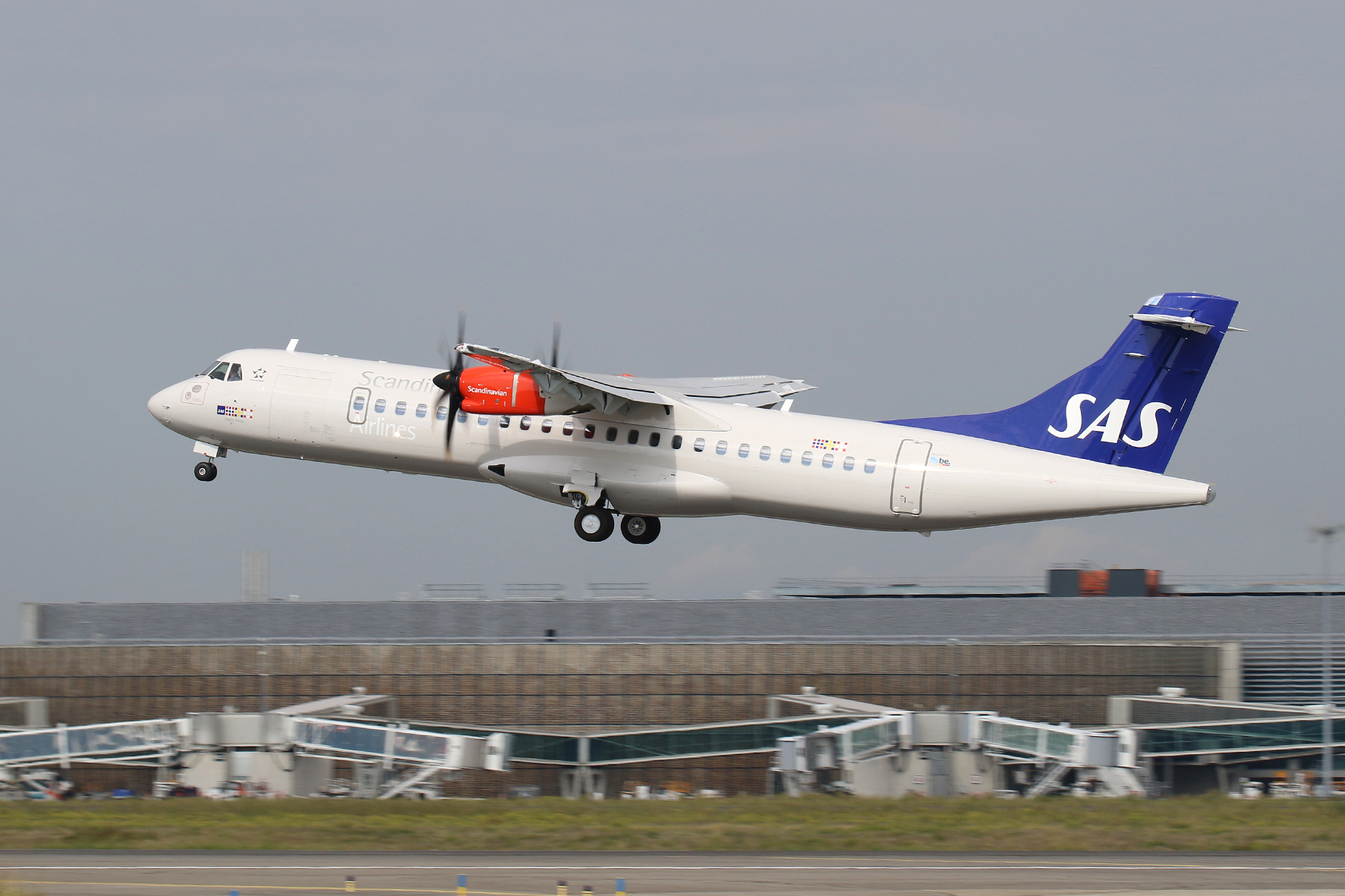ATR 72 Operations

The ATR 72, a turboprop aircraft designed by ATR, is a popular choice for regional air travel. Its versatility and efficiency make it suitable for a wide range of applications, including scheduled passenger services, cargo transportation, and specialized operations.
Typical Roles and Applications of the ATR 72
The ATR 72’s adaptability makes it a valuable asset for airlines and operators worldwide. It excels in various roles, catering to diverse needs within the aviation industry.
- Scheduled Passenger Services: The ATR 72 is primarily used for scheduled passenger services on regional routes. Its fuel efficiency and ability to operate from smaller airports make it ideal for connecting smaller cities and towns to major hubs.
- Cargo Transportation: The ATR 72’s spacious cabin and cargo door allow it to be configured for cargo transportation. It’s often used for transporting goods, especially perishable items, to remote locations.
- Specialized Operations: The ATR 72’s versatility extends to specialized operations, including air ambulance services, aerial surveillance, and passenger charter flights.
Advantages and Disadvantages of the ATR 72 for Regional Air Travel
The ATR 72 presents both advantages and disadvantages for regional air travel, influencing its suitability for specific routes and market conditions.
Advantages
- Fuel Efficiency: The ATR 72’s turboprop engines consume significantly less fuel than jet engines, making it an economical choice for regional routes.
- Short Takeoff and Landing Capabilities: The ATR 72 can operate from shorter runways, allowing it to serve smaller airports and remote locations that may not be accessible to larger aircraft.
- Lower Operating Costs: The ATR 72’s fuel efficiency and lower maintenance costs contribute to lower operating expenses compared to jet aircraft, making it a more affordable option for regional airlines.
- Passenger Comfort: The ATR 72 offers a comfortable cabin experience, with spacious seating and large windows.
Disadvantages
- Limited Range: The ATR 72’s turboprop engines have a shorter range compared to jet engines, limiting its use on longer routes.
- Slower Speed: The ATR 72’s turboprop engines result in slower flight speeds compared to jet aircraft, which can be a drawback for time-sensitive passengers.
- Noise Levels: Turboprop engines can be louder than jet engines, which may be a concern for passengers and communities near airports.
Operational Costs and Economics of Operating an ATR 72
The operating costs of an ATR 72 are significantly lower than those of jet aircraft, making it an attractive option for regional airlines.
- Fuel Consumption: The ATR 72’s fuel efficiency is a major contributor to its low operating costs. Its turboprop engines consume significantly less fuel than jet engines, resulting in lower fuel bills.
- Maintenance Costs: The ATR 72’s relatively simple design and proven technology contribute to lower maintenance costs.
- Crew Costs: The ATR 72 typically requires a smaller crew than jet aircraft, further reducing operating expenses.
Examples of Airlines and Operators that Utilize the ATR 72, Atr 72 plane
The ATR 72 is widely used by airlines and operators worldwide, serving a diverse range of routes and markets.
- Air France: Air France operates a fleet of ATR 72s under its regional subsidiary, Hop!
- United Airlines: United Airlines utilizes ATR 72s for regional flights under its regional partners.
- Flybe: Flybe, a European regional airline, was a major operator of the ATR 72 before its collapse in 2020.
- Aer Lingus: Aer Lingus, the Irish national airline, operates ATR 72s for regional flights within Ireland and to the United Kingdom.
Timeline Illustrating the Growth and Evolution of ATR 72 Operations Worldwide
The ATR 72 has seen significant growth and evolution since its introduction in 1989.
| Year | Event |
|---|---|
| 1989 | The ATR 72 enters service with Air Littoral (now Air France Hop!) |
| 1990s | The ATR 72 becomes increasingly popular with regional airlines worldwide. |
| 2000s | ATR introduces the ATR 72-500, featuring improved performance and fuel efficiency. |
| 2010s | ATR launches the ATR 72-600, incorporating new avionics and a more modern cabin. |
| 2020s | The ATR 72 continues to be a popular choice for regional airlines, with ongoing improvements and upgrades. |
ATR 72 Safety and Reliability: Atr 72 Plane

The ATR 72, a twin-engine turboprop aircraft, has gained a reputation for its safety and reliability in the regional aviation sector. Its robust design, advanced technologies, and rigorous maintenance practices contribute to its impressive safety record.
Safety Record of the ATR 72
The ATR 72 has a strong safety record, with a low rate of accidents and incidents. This is attributed to several factors, including its robust design, advanced technologies, and a rigorous maintenance program. The aircraft’s safety record is consistently monitored and analyzed by aviation authorities and industry experts.
Safety Features and Technologies
The ATR 72 incorporates numerous safety features and technologies designed to enhance operational safety and minimize the risk of accidents. These include:
- Advanced Flight Control System: The ATR 72 is equipped with a highly sophisticated flight control system that provides stability and controllability, even in challenging weather conditions. This system incorporates advanced features like automatic stability augmentation and enhanced protection against stalls and spins.
- Redundant Systems: Critical systems, such as the hydraulics, electrical, and flight control systems, are designed with redundancy to ensure continued operation even in the event of a failure. This redundancy enhances the aircraft’s reliability and reduces the risk of catastrophic events.
- Enhanced Ground Proximity Warning System (GPWS): The ATR 72 is equipped with a sophisticated GPWS that provides alerts to pilots in situations where the aircraft is approaching the ground at a dangerous rate. This system uses radar and other sensors to monitor the aircraft’s altitude and terrain, alerting the crew to potential hazards.
- Collision Avoidance System (CAS): The ATR 72 is equipped with a CAS that uses radar and transponder data to detect potential collisions with other aircraft. This system provides timely alerts and warnings to pilots, allowing them to take evasive action and avoid collisions.
- Fire Detection and Suppression Systems: The aircraft is equipped with fire detection and suppression systems in the engine compartments and other critical areas. These systems are designed to quickly detect and extinguish fires, preventing them from escalating into major incidents.
- Emergency Evacuation System: The ATR 72 is designed with a rapid and efficient emergency evacuation system. This system includes large emergency exits, inflatable slides, and clear evacuation procedures to ensure the safe and timely evacuation of passengers and crew in the event of an emergency.
Notable Incidents and Accidents
While the ATR 72 has a generally good safety record, there have been some notable incidents and accidents involving the aircraft. These events have been thoroughly investigated to identify contributing factors and implement safety improvements.
- 2014 TransAsia Airways Flight 235: This accident, which involved an ATR 72-600, occurred during takeoff in Taipei, Taiwan. The aircraft stalled and crashed into a river, resulting in 43 fatalities. The investigation determined that the pilot’s actions and a possible malfunction in the engine control unit contributed to the accident. This incident led to a review of pilot training and safety procedures for ATR 72 aircraft.
- 2015 Germanwings Flight 9525: This incident involved an Airbus A320, not an ATR 72, but it is relevant to the discussion of aircraft safety. The co-pilot deliberately crashed the aircraft into the French Alps, resulting in the deaths of all 150 people on board. This tragic event highlighted the importance of mental health screening for pilots and the need for robust cockpit security measures.
Comparison with Other Regional Aircraft
The ATR 72’s safety record compares favorably with other regional aircraft in its class. Studies and analyses conducted by aviation safety organizations have consistently ranked the ATR 72 among the safest regional aircraft.
- Safety Data from Aviation Safety Network (ASN): ASN, a leading provider of aviation safety data, has compiled statistics on accidents and incidents involving various aircraft types. These statistics indicate that the ATR 72 has a relatively low accident rate compared to other regional aircraft.
- Industry Reports and Reviews: Independent industry reports and reviews, such as those conducted by the International Air Transport Association (IATA) and the European Aviation Safety Agency (EASA), have consistently praised the ATR 72’s safety record and its commitment to safety.
Ongoing Maintenance and Support
ATR provides comprehensive maintenance and support services for its aircraft fleet. This includes:
- Technical Support: ATR offers 24/7 technical support to operators, providing expert assistance for troubleshooting, maintenance, and operational issues. This support is available through a global network of engineers and technicians.
- Spare Parts Availability: ATR maintains a vast inventory of spare parts for its aircraft, ensuring that operators have access to the necessary components for timely repairs and maintenance. This extensive inventory helps to minimize downtime and ensure the aircraft’s operational readiness.
- Training Programs: ATR provides comprehensive training programs for pilots, maintenance technicians, and other personnel involved in the operation of its aircraft. These programs cover a wide range of topics, including aircraft systems, maintenance procedures, and safety protocols.
Atr 72 plane – The ATR 72 is a popular regional aircraft, known for its fuel efficiency and versatility. While its primary focus is on regional travel, it’s interesting to note how its reliability and comfort are often discussed in the context of other major events, such as the September presidential debate.
Perhaps the debate’s organizers will opt for a reliable ATR 72 to transport candidates, ensuring they arrive safely and on time for this crucial event.
The ATR 72 is a popular regional aircraft known for its versatility and fuel efficiency. However, even these nimble planes can be affected by weather conditions, which can lead to disruptions like the ground stop of NYC airports that recently occurred.
These ground stops can have a significant impact on the ATR 72’s flight schedule, potentially causing delays and cancellations for passengers.
